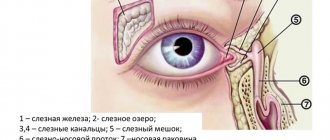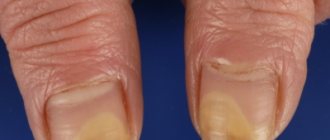Pathologies of the ear, nose and throat are ENT diseases. The specialist who treats these organs is called an otolaryngologist or ENT doctor. Diseases of the ear, nose and throat cause negative changes in the affected organs and disrupt a person’s overall well-being.
Diseases of the ENT organs must be treated at an early stage of their development, since after these pathologies enter the chronic stage, treatment will be more complex and lengthy, often dragging on for many years. Untreated illnesses in childhood can cause developmental delays in the child.
Types of diseases
The list of ENT diseases is huge; it can include hundreds of clinical names. Diseases of the nose, throat and ear are often diagnosed in children and adults. Children are exposed to them more often due to imperfect immunity.
Nose diseases:
- runny nose or rhinitis in acute and chronic stages;
- sinusitis (sinusitis, frontal sinusitis, ethmoiditis, sphenoiditis);
- allergic rhinitis;
- adenoiditis;
- foreign body in the nasal cavity;
- nosebleeds, etc.
The pathological process affects the mucous membrane of the nasal cavity and paranasal sinuses. Some chronic nasal diseases (for example, sinusitis and sinusitis) can cause serious complications in the form of painful migraines, blurred vision and the development of meningitis.
Ear diseases:
- internal, external and otitis media;
- eustachitis;
- sulfur plug;
- foreign body in the ear canal;
- injury to the inner ear and eardrum, etc.
The clinical picture of ear pathologies in almost all cases occurs against the background of hearing loss. Inflammatory processes are usually accompanied by an increase in body temperature, symptoms of intoxication of the body, discharge and acute sensations of pain in the ear. In adult patients, signs of ear disease are often blurred and mild, so pathology is more difficult to detect and is delayed. Signs of a pathological process may not be felt for a long time.
Throat diseases:
- angina;
- pharyngitis;
- laryngitis;
- diphtheria;
- burn of the pharynx mucosa;
- foreign bodies in the throat.
Throat diseases can occur with or without fever. The most common ENT disease is tonsillitis (angina) in the acute and chronic stages. Chronic diseases are more difficult to treat conservatively and more often cause the development of serious complications. The clinical picture of the listed pathologies includes symptoms of cough, sore throat, sore throat, and phlegm production. In adults, these signs will not always be obvious. In childhood, the disease is more complex and is often aggravated by concomitant pathologies.
Throat lesions
Throat lesions are almost as common as nasal lesions. Pathologies can be viral, bacterial or fungal in nature, and in addition, caused by mechanical or thermal injuries. Most often, patients are diagnosed with tonsillitis and pharyngitis. They occur both independently and against the background of common viral infections, such as influenza, acute respiratory infections or acute respiratory viral infections.
Throat pathologies, in addition to pain, often cause a reflex cough. In children, throat diseases are more severe and at an early age can easily lead to an attack of suffocation due to swelling of the mucous membrane. Because of this, most often patients under three years of age are subject to hospitalization, which parents are strongly advised not to refuse.
Causes
Common causes of nose, throat and ear diseases include:
- hypothermia of the body, both general (swimming in cold water, wearing shoes and clothes that are not suitable for the weather) and local (drinking cold drinks, especially in hot weather);
- a sharp change in temperature values;
- weak immune defense;
- lack of vitamins and microelements entering the body with food;
- stress, increased physical and mental stress;
- bad habits;
- viruses, infections.
Treatment Options
For effective treatment of ENT nose throat ear
an integrated approach is needed, only after a thorough examination.
It all depends on the severity of the disease:
- conservative, which includes physiotherapy, inhalations and medications,
- surgical, indicated only in severe cases, in the presence of complications.
The most commonly prescribed medications are antibiotics, antiviral drugs, antiallergic, analgesic, and antipyretic drugs. For optimal results, it is better to use a topical sinus rinser. It would not be superfluous to use local antiseptics.
Surgical intervention must be performed in the presence of complications of otitis media, sinusitis and tonsillitis. It is best to drain and wash the organ cavities. It is better to rinse with antiseptic agents to prevent bacterial and purulent diseases.
If there is an abscess, you need to open it, then wash it out of pus and stitch it up. Indications for surgical intervention are also persistent inflammation of the tonsils, more than 4 times a year. By the way, here you can learn how to properly apply an alcohol compress to your ear.
Viral infections
They are the main cause of seasonal ENT diseases such as rhinitis and otitis, which most often accompany it. Respiratory viral diseases and influenza occur with nasal congestion and nasal discharge. The group of viruses that has a greater damaging effect on the nasopharynx and nasal mucosa is represented by rhinoviruses. The close relationship between the ENT organs means that during a viral infection they all suffer. Nasal secretions, flowing into the oropharynx, spread infectious agents deeper, provoking the development of pharyngitis and laryngitis.
When do you need to urgently show your child to an otolaryngologist?
Children, due to their weak immune system and anatomical features, suffer from ENT diseases much more often than adults. The disease almost always occurs in an acute form and without proper treatment can lead to very serious consequences, for example, significant hearing loss.
The main difficulty is that the baby cannot clearly explain what is bothering him, or does not yet speak at all. Parents should remember the following signs of ear, nose and throat diseases and take their child to the doctor the first time they appear:
- The baby gets tired quickly and tries to move less.
- It is easier for him to breathe through his mouth than through his nose, his lips are always parted.
- During sleep, the child snores or even snores and breathes through his mouth.
- Chronic or periodic runny nose, discharge - thick, purulent, green, with an unpleasant odor.
- Poor sleep, refusal even of your favorite treats and activities.
- Nasal voice.
- The child complains of pain in the neck, ear or forehead area. He holds on to the sore spot and does not allow him to touch it.
- The baby does not immediately respond to his name and does not respond to spoken speech.
Infants with ENT diseases cry a lot, sleep restlessly, and refuse the breast and bottle.
Hypothermia
A cold can take you by surprise not only in the cold season, but also in hot weather. This is most often observed in individuals suffering from decreased immunity. In the cold season, low temperatures provoke spasm and constriction of blood vessels, disrupt tissue trophism, which, in turn, increases the likelihood of developing inflammatory processes and ENT diseases due to the penetration of infectious pathogens into the organs.
In the summer, the greatest danger to the throat is swimming in cold water, ice cream and chilled drinks. Ears are more susceptible to cold gusts of wind and low temperatures, so they should definitely be protected by wearing a scarf or hat. A runny nose most often develops due to frozen feet, which is why you need to wear shoes appropriate for the weather and prevent them from getting hypothermic. Any diseases of an inflammatory, infectious and systemic nature often become a provoking factor for the development of ENT diseases.
Newborns and early childhood
If an adult blows into his ear, he will “get off” with otitis media, but in a newborn everything will immediately become inflamed! Why do you think? Weak immunity of children? Not only. It's also a matter of anatomical structure. A child’s auditory tube is like an open window; it allows infection to pass through the ears unhindered and spread to neighboring areas: sinuses, throat. This route of infection is called tubar.
The structural features also explain the fact that young children (under 3 years old) have their own specific diseases.
Otoanthritis
Inflammation of the ear extending to the mastoid process. In children under 2 years of age, these structures located in the temporal bone are not isolated from each other. The transition of inflammation to the mastoid process is dangerous because from here the process can go further - to the skull. Therefore, if there is inflammation of the area behind the ear, fever, pus from the ear, indigestion, or tearfulness of the baby, immediately call a doctor.
Congenital stridor
A disease that is associated with abnormalities of the trachea or larynx. It manifests itself as noisy, heavy breathing in a child, especially when crying or having a cold. Associated with the structural features of the hammer, incus, and labyrinth of the ear.
As these structures “mature”, the disease disappears (usually by 3 years). But throughout this period, ENT supervision is necessary. Sometimes the disease requires surgery.
General symptoms
The general clinical picture of ear, nose and throat diseases is characterized by:
- discomfort and pain in the larynx and nasopharynx;
- difficulty in nasal breathing;
- increased body temperature;
- intoxication of the body in the form of weakness, deterioration in performance, muscle pain;
- inflammatory phenomena in the affected organs;
- discharge from the nasal cavity and ears;
- pathological enlargement of the submandibular lymph nodes;
- decreased hearing quality;
- headaches;
- decreased defense of the immune system;
- impaired sense of smell, etc.
If, against the background of the current disease, several of the listed symptoms are observed at once, this indicates an advanced stage of the disease.
ENT diseases in adolescents
The ENT organs of adolescents have already been formed, and the immune system has become resistant to various infections. It would seem that parents can breathe out calmly. But you still need to visit a specialist for preventive purposes. This is especially true for boys, because they have such a disease as...
Juvenile angiofibroma of the nasopharynx
Develops during puberty. Essentially, it is a benign tumor. But its insidiousness is that it can grow, affecting nearby tissues and blood vessels. And this affects vision, hearing, smell, and breathing. Manifested by bleeding, headache, facial asymmetry. The disease can only be treated surgically.
How are the ENT organs interconnected?
All diseases of the ENT organs are combined into a general category because the throat, ear and nasal cavity interact as a single physiological system. For example, if a person has a sore throat, the infectious process can easily penetrate the sinuses or inner ear, causing inflammation in them, and vice versa. Most often this happens due to untimely treatment of ENT diseases or a decrease in the immune system. Otolaryngology as a science deals with the research and treatment of ENT diseases, and also works in a preventive direction. An otolaryngologist, in addition to specific knowledge about the pathologies of the ENT organs, must have the knowledge and practical skills of a therapist and surgeon. Advanced diseases in otolaryngology often require the doctor to perform surgical procedures.
Treatment of ENT diseases consists of a complex effect on the body, in particular on the affected organ or organ system through medicinal, symptomatic, physiotherapeutic and radical therapy. All diseases require competent diagnosis and selection of the most gentle and effective therapeutic intervention. In addition to treating the underlying pathology, specialists pay attention to improving the patient’s immune system and are engaged in the prevention of possible relapses of ENT diseases. Self-medication or ignoring treatment of diseases can cause serious consequences for the body as a whole. One pathology of the ENT organs easily leads to complications of another. For example, a common runny nose can lead to inflammation of the maxillary sinuses (sinusitis) and middle ear (otitis). That is why it is necessary to treat any pathological conditions of the ENT organs in a comprehensive manner, since they are interconnected.
Is it necessary to go to an otolaryngologist if you have the flu?
Traditionally, the treatment of influenza, sore throat and ARVI is carried out by a therapist. Urgent help from an ENT doctor is needed if the disease has progressed to a more severe form. For example:
- Very high temperature.
- The appearance of a bloody rash on the skin, mucous membranes of the eyes and mouth.
- Impaired consciousness, delusions, hallucinations.
- Profuse nosebleeds.
- Signs of irritation of the dura mater of the brain are severe vomiting, nausea, pain at the slightest touch, throwing back the head.
Remember, ENT diseases must be treated at the first symptoms and must be followed to the end. Otherwise - and this is in the best case - the disease will quickly become chronic, in the worst - the person may become disabled.
If you suffer from prolonged or repeated runny nose, pharyngitis, laryngitis, chronic tonsillitis or adenoiditis, we recommend checking the state of your immune system and undergoing a special set of examinations.
Advantages of treatment at an ENT center
Treatment of ear, nose and throat diseases at the ENT CENTER is a comprehensive and individual approach to each patient. By making a preliminary appointment on the medical center’s website or by phone, you can:
- get face-to-face consultation with a specialist;
- undergo treatment of ENT diseases using progressive techniques;
- receive recommendations for further conservative treatment and prevention of ENT diseases.
Contact the ENT CENTER : here they will help you solve any problem within the competence of ENT doctors as efficiently, safely, quickly and painlessly as possible.
Check your baby's hearing
Congenital deafness and hearing loss, unfortunately, are very common problems in Russia. According to statistics, various hearing impairments develop in children under 2 years of age in 82% of cases. Their treatment and rehabilitation must begin immediately.
Why is bad hearing dangerous?
- The child begins to speak and understand speech late. It is difficult for him to pronounce all sounds, because he cannot hear himself.
- It is difficult for him to socialize and communicate with peers. He finds himself in a closed group of people who are able to understand him - parents, a kindergarten or school for children with disabilities, teachers.
- Mental and psycho-emotional development slows down significantly.
The sooner hearing impairment is identified and treatment and auditory-speech rehabilitation are started, the faster the child will be able to “catch up” with healthy peers and develop normally, the greater the chance of success. Modern medical and pedagogical methods do not allow a hearing-impaired child to become disabled and end up in a vicious circle of special institutions. The main thing is not to waste time!
In a child aged 0 to 2 years, hearing loss can be identified by the following signs:
- In the first 2-3 weeks of life, the baby does not flinch from loud sounds.
- At 1 month he does not turn his head to the sound of a voice behind him.
- At 1-4 months, the child does not react to the mother’s voice, a musical toy, does not scream and does not open his eyes wide at sudden loud sounds.
- At 2-4 months there is no “booming”.
- At the age of 4-5 months, “humming” does not turn into babbling.
- The baby does not wake up or cry from loud sounds.
- At 8-9 months, the child does not make any new sounds, there is no emotional babble when mom and dad come, no treats, no toys.
- At 1-2 years old, the child does not turn to the voice or sound behind him, does not react to speech addressed to him, does not try to speak, pronounce individual sounds, words, and does not understand the parents’ remarks.
If you notice at least one of the listed signs in your baby, immediately contact our otolaryngologist. He will conduct the necessary research, determine the type and degree of hearing loss and prescribe treatment.
Nose pain
Pain in the nose occurs with diseases such as sinusitis, sinusitis, ganglionitis and many others. With a normal runny nose, the pain in the nose is not severe . Rather, it is a state of discomfort.
If the pain is burning, “jerking”, does not go away, or frequent exacerbations are observed, an examination is necessary. It could be a runny nose. Pain in the nose is observed with scarlet fever. Furunculosis causes pain.
Severe paroxysmal pain indicates neuralgia of the nasociliary nerve.
Cough
Reflex coughing, designed to clear the airways, has nothing to do with a symptom that can manifest itself in a variety of diseases.
Cough as a symptomatic signal is an indicator of the following diseases:
- allergic;
- inflammatory;
- nervous;
- cardiovascular;
- tumor.
The main symptom is cough for respiratory diseases. There is also a type of cough that is considered a sign of difficult to diagnose diseases.
In any case, you should consult a doctor if you have a cough.
Snore
In our society, snoring is usually taken lightly. Many people believe that this phenomenon is unpleasant for others, but not for the snorer.
In fact, snoring can most likely indicate the presence of rhinitis or an equally serious disease - obstructive apnea syndrome . This disease is fraught with cessation of breathing during sleep, during which a person does not breathe for up to several minutes.
At this time, cardiac arrest may occur and sudden death may occur during sleep.
Smell disorder
Decreased, absent, or any other disturbance in the sense of smell is a symptom of various inflammations or congenital pathologies. The cause of impaired sense of smell may be underdevelopment of receptors.
A runny nose, whether caused by a cold or allergies, can cause a short-term decrease in sense of smell. Flu also contributes to a disorder of smell, during which the receptors are partially blocked due to numbness of the epithelium.
Various tumors can be a serious cause of smell dysfunction.








